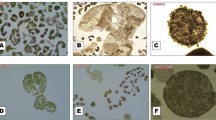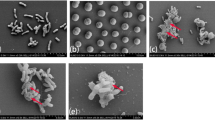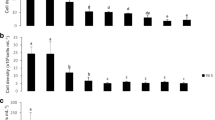Abstract
Microcystins, a toxin produced by Microcystis aeruginosa have become a global environmental issue in recent years. As a consequence of eutrophication, microcystins have become widely disseminated in drinking water sources, seriously impairing drinking water quality. This review focuses on the relationship between microcystins synthesis and physical, chemical, and biological environmental factors that are significant in controlling their production. Light intensity and temperature are the more important physical factors, and in many cases, an optimum level for these two factors has been observed. Nitrogen and phosphorus are the key chemical factors causing frequent occurrence of harmful algal blooms and microcystins production. The absorption of nutrients and metabolic activities of algae are affected by different concentrations and forms of nitrogen and phosphorus, leading to variations in microcystins production Metal ions and emerging pollutants are other significant chemical factors, whose comprehensive impact is still being studied. Algae can also interact with biological agents like predators and competitors in aquatic environments, and such interactions are suggested to promote MCs production and release. This review further highlights areas that require further research in order to gain a better understanding of microcystins production. It provides a theoretical basis for the control of microcystins production and releasing into aquatic environments.

Similar content being viewed by others
References
Alexoval R, Fujii M, Birch D, Cheng J, Waite TD, Ferrari BC, Neilan BA (2011) Iron uptake and toxin synthesis in the bloom-forming Microcystis aeruginosa under iron limitation. Environ Microbiol 13(4):1064–1077
Boopathi T, Ki J (2014) Impact of environmental factors on the regulation of cyanotoxin production. Toxins 6(7):1951–1978
Bormans M, Lengronne M, Brient L, Duval C (2014) Cylindrospermopsin accumulation and release by the benthic cyanobacterium Oscillatoria sp. PCC 6506 under different light conditions and growth phases. Bulletin of environmental contamination and toxicology 92:243–247
Brookes JD, Carey CC (2011) Resilience to blooms. Science 334:46–47
Chalifour A, Juneau P (2011) Temperature-dependent sensitivity of growth and photosynthesis of Scenedesmus obliquus: Navicula pelliculosa and two strains of Microcystis aeruginosa to the herbicide atrazine. Aquat Toxicol 103:9–17
Dai RH, Liu HJ, Qu JH (2009) Effects of amino acids on microcystin production of Microcystis aeruginosa. Hazard Mater 161(23):730–736
Davis TW, Berry DL, Boyer GL, Gobler CJ (2009) The effects of temperature and nutrients on the growth and dynamics of toxic and non-toxic strains of Microcystis during cyanobacteria blooms. Harmful Algae 8:715–725
Deblois CP, Juneau P (2010) Relationship between photosynthetic processes and microcystin in Microcystis aeruginosa grown under different photon irradiances. Harmful Algae 9(1):18–24
Ginn HP, Neilan BA (2010) NtcA from Microcystis aeruginosa PCC 7806 is autoregulatory and binds to the microcystin promoter. Appl Environ Microbiol 76:4362–4368
Gobler CJ, Davis TW, Coyne KJ, Boyer GL (2008) Corrigendum to “Interactive influences of nutrient loading, zooplankton grazing, and microcystin synthetase gene expression on cyanobacterial bloom dynamics in a eutrophic New York lake”. Harmful Algae 7(2):258
Gurbuz F, Metcalf JS, Karahan AG, Codd GA (2009) Analysis of dissolved microcystins in surface water samples from Kovada Lake, Turkey. Sci Total Environ 407:4038–4046
Hu H, Chen W, Shi Y, Cong W (2006) Nitrate and phosphate supplementation to increase toxin production by the marine dinoflagellate Alexandrium tamarense. Mar Pollut Bull 52(7):756–760
Jang MH, Jung JM, Takamura N (2007) Changes in microcystin production in cyanobacteria exposed to zooplankton at different population densities and infochemical concentrations. Limnol Oceanogr 52:1454–1466
Jang MH, Ha K, Takamura N (2008) Microcystin production by Microcystis aeruginosa exposed to different stages of herbivorous zooplankton. Toxicon 51:882–889
Jiang Y (2008) Statistical study on the effects of environmental factors on the growth and microcystins production of bloom-forming cyanobacterium Microcystis aeruginosa. Harmful Algae 7:127–136
Kaebernick M, Neilan BA (2000) Light and the transcriptional response of the microcystin biosynthesis gene cluster. Appl Environ Microbiol 66(8):3387–3392
Kaplan A, Harel M, Kaplan RN, Hadas O, Sukenik A, Dittmann E (2012) The languages spoken in the water body (or the biological role of cyanobacterial toxins). Front Microbiol 3:138
Kim HR, Kim CK, Ahn TS, Yoo SA, Lee DH (2005) Effects of temperature and light on microcystin synthetase gene transcription in Microcystis aeruginosa. Key Eng Mater 277–279:606–611
Kuniyoshi TM, Sevilla E, Bes MT, Fillat MF, Peleato ML (2013) Phosphate deficiency (N/P 40:1) induces mcyD transcription and microcystin synthesis in Microcystis aeruginosa PCC7806. Plant Physiol Biochem 65:120–124
Liu Y, Gao B, Yue Q, Guan Y, Wang Y, Huang L (2012) Influences of two antibiotic contaminants on the production, release and toxicity of microcystins. Ecotoxicol Environ Saf 77:79–87
Liu Y, Zhang J, Gao B, Feng S (2014) Combined effects of two antibiotic contaminants on Microcystis aeruginosa. J Hazard Mater 279:148–155
Long BM (2010) Evidence that sulfur metabolism plays a role in microcystin production by Microcystis aeruginosa. Harmful Algae 9(1):74–81
Long BM, Jones GJ, Orr PT (2001) Cellular microcystin content in N-limited can be predicted from growth rate. Appl Environ Microbiol 67(1):278–283
Lyck S (2004) Simultaneous changes in cell quotas of microcystin, chlorophyll a, protein and carbohydrate during different growth phases of a batch culture experiment with Microcystis aeruginosa. J Plankton Res 26:727–736
Ma J (2005) Differential sensitivity of three cyanobacterial and five green algal species to organotins and pyrethroids pesticides. Sci Total Environ 341(1–3):109–117
Mihali TK, Kellmann R, Muenchhoff J, Barrow KD, Neilan BA (2008) Characterization of the gene cluster responsible for cylindrospermopsin biosynthesis. Appl Environ Microbiol 74:716–722
Mohamed ZA, Al-Shehri AM (2013) Assessment of cylindrospermopsin toxin in an arid Saudi lake containing dense cyanobacterial bloom. Environ Monit Assess 185:2157–2166
Otten TG, Xu H, Qin B, Zhu G, Paerl HW (2012) Spatiotemporal patterns and ecophysiology of toxigenic microcystis blooms in Lake Taihu, China: Implications for water quality management. Environ Sci Technol 46(6):3480–3488
Paerl HW, Otten TG (2013) Harmful cyanobacterial blooms: causes, consequences, and controls. Microb Ecol 65:995–1010
Pimentel JSM, Giani A (2014) Microcystin production and regulation under nutrient stress conditions in toxic microcystis strains. Appl Environ Microbiol 80(18):5836–5843
Polyak Y, Zaytseva T, Medvedeva N (2013) Response of toxic cyanobacterium Microcystis aeruginosa to environmental pollution. Water Air Soil Pollut 224:1494–1508
Qian HF, Pan XJ, Chen J, Zhou DM, Chen ZG, Zhang L, Fu ZW (2012) Analyses of gene expression and physiological changes in Microcystis aeruginosa reveal the phytotoxicities of three environmental pollutants. Ecotoxicology 21:847–859
Rastogi RP, Sinha RP (2014) The cyanotoxin-microcystins: current overview. Rev Environ Sci Biotechnol 13(2):215–249
Rinta-Kanto JM, Konopko EA, Debruyn JM, Bourbonniere RA, Boyer GL, Wilhelm SW (2009) Lake Erie Microcystis: relationship between microcystin production, dynamics of genotypes and environmental parameters in a large lake. Harmful Algae 8(5):665–673
Selander E, Thor P, Toth GB, Pavia H (2006) Copepods induce Paralytic shellfish toxin Production in marine dinoflagellates. Proc R Soc Lond B Biol Sci 273:1673–1680
Sevilla E, Martin-Luna B, Vela L, Bes MT, Fillat MF, Peleato ML (2008) Iron availability affects mcyD expression and microcystin-LR synthesis in Microcystis aeruginosa PCC7806. Environ Microbiol 10(10):2476–2483
Sevilla E, Martin-Luna B, Vela L, Bes MT, Peleato ML, Fillat M (2010) Microcystin-LR synthesis as response to nitrogen: transcriptional analysis of the mcyD gene in Microcystis aeruginosa PCC7806. Ecotoxicology 19:1167–1173
Sevilla E, Martin-Luna B, Bes MT, Fillat M, Peleato ML (2012) An active photosyntheticelectron transfer chain required for mcyD transcription and microcystin synthesis in Microcystis aeruginosa PCC7806. Ecotoxicology 21:811–819
Sharma VK, Triantis TM, Antoniou MG, He X, Pelaez M, Han C, Song W, O’Shea KE, de la Cruz AA, Kaloudis T, Hiskia A, Dionysiou DD (2012) Destruction of microcystins by conventional and advanced oxidation processes: a review. Sep Purif Technol 91:3–17
Shi K, Zhang Y, Xu H, Zhu G, Qin B, Huang C, Liu X, Zhou Y, Lv H (2015) Long-term satellite observations of microcystin concentrations in Lake Taihu during cyanobacterial bloom periods. Environ Sci Technol 49(11):6448–6456
Sivonen K (1990) Effects of light, temperature, nitrate, orthophosphate, and bacteria on growth of and hepatotoxin production by Oscillatoria agardhii strains. Appl Environ Microbiol 56(9):2658–2666
Utkilen H, Gjølme N (1992) Toxin production by Microcystis aeruginosa as a function of light in continuous cultures and its ecological significance. Appl Environ Microbiol 8(4):1321–1325
Utkilen H, Gjølme N (1995) Iron stimulated toxin production in Microcystis aeruginosa. Appl Environ Microbiol 61(2):797–800
Wang Q, Niu Y, Xie P, Chen J, Ma ZM, Tao M, Qi M, Wu LY, Guo LG (2010) Factors affecting temporal and spatial variations of microcystins in Gonghu Bay of Lake Taihu, with potential risk of microcystin contamination to human health. Sci World J 10:1795–1809
Westhuizen AJ, Eloff JN (1985) Effect of temperature and light on the toxicity and growth of the blue-green alga Microcystis aeruginosa (UV-006). Planta 163(1):55–59
Wiedner C, Visser PM, Fastner J (2003) Effects of light on the microcystin content of Microcystis strain PCC 7806. Appl Environ Microbiol 69(3):1475–1481
Wu XH, Yan YW, Wang PF, Ni NQ, Gao JY, Dai RH (2015) Effect of urea on growth and microcystins production of Microcystis aeruginosa. Bioresour Technol 181:72–77
Yan YW, Dai RH, Liu Y, Gao JY, Wu XH (2015) Comparative effects of inorganic and organic nitrogen on the growth and microcystin production of Microcystis aeruginosa. World J Microbiol Biotechnol 31(5):763–772
Yoshida M, Yoshida T, Takashima Y, Hosoda N, Hiroishi S (2007) Dynamics of microcystin-producing and non-microcystin-producing Microcystis populations is correlated with nitrate concentration in a Japanese lake. Fems Microbiol Lett 266:49–53
Zhu X, Kong H, Gao Y, Wu M, Kong F (2012) Low concentrations of polycyclic aromatic hydrocarbons promote the growth of Microcystis aeruginosa. J Hazard Mater 237–238:371–375
Acknowledgments
The authors wish to express their gratitude to the special fund from the State Key Joint Laboratory of Environment Simulation and Pollution Control (Research Center for Eco-environmental Sciences, Chinese Academy of Sciences) (Project No. 15K03ESPCR) and Shanghai Natural Science Foundation (15ZR1402100).
Author information
Authors and Affiliations
Corresponding author
Rights and permissions
About this article
Cite this article
Dai, R., Wang, P., Jia, P. et al. A review on factors affecting microcystins production by algae in aquatic environments. World J Microbiol Biotechnol 32, 51 (2016). https://doi.org/10.1007/s11274-015-2003-2
Received:
Accepted:
Published:
DOI: https://doi.org/10.1007/s11274-015-2003-2




